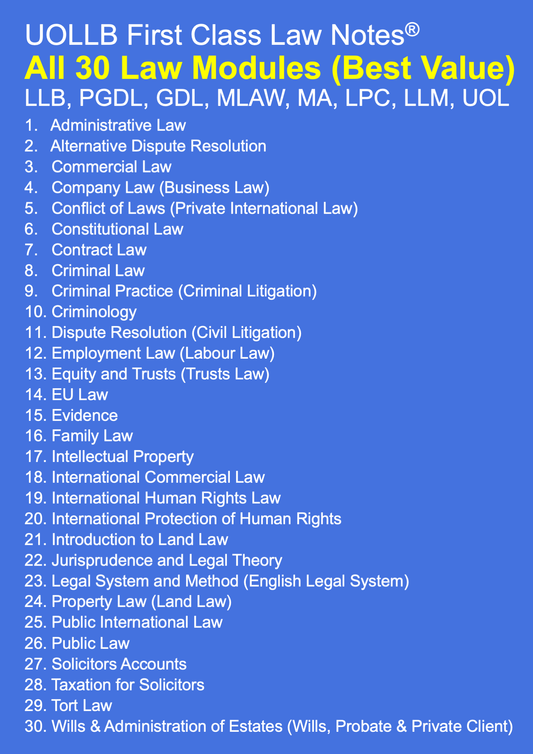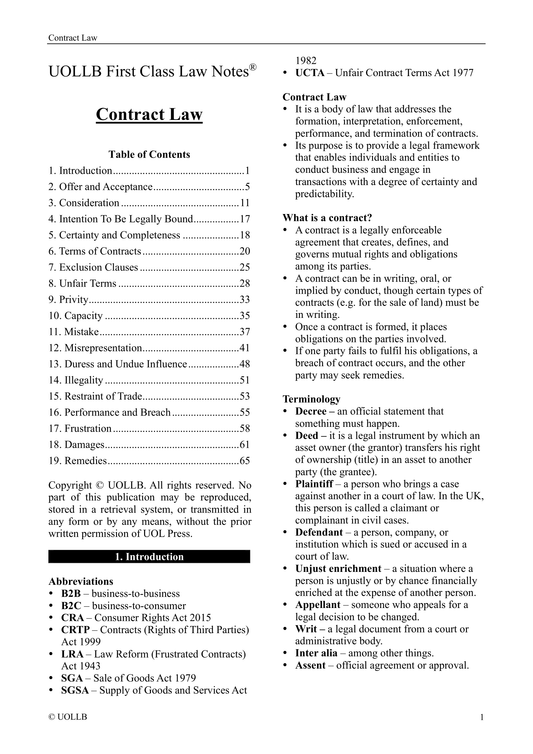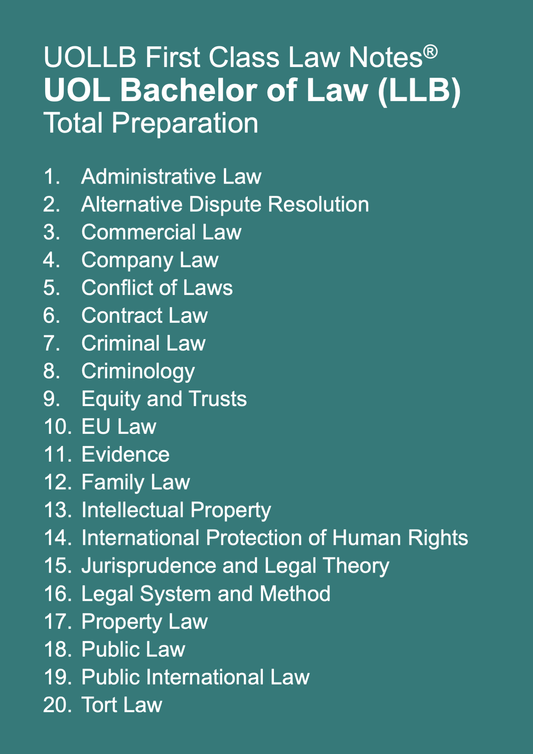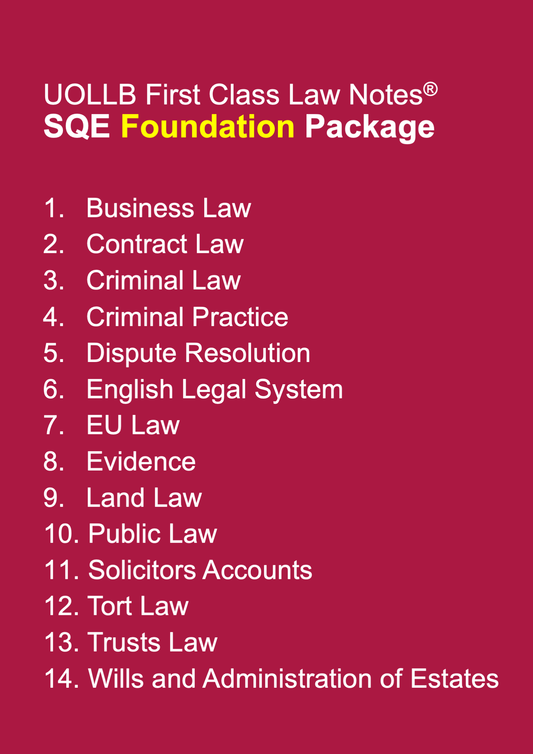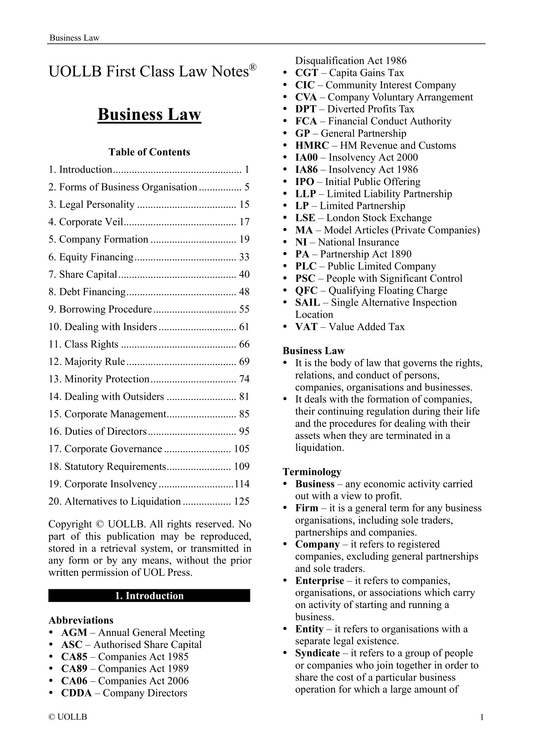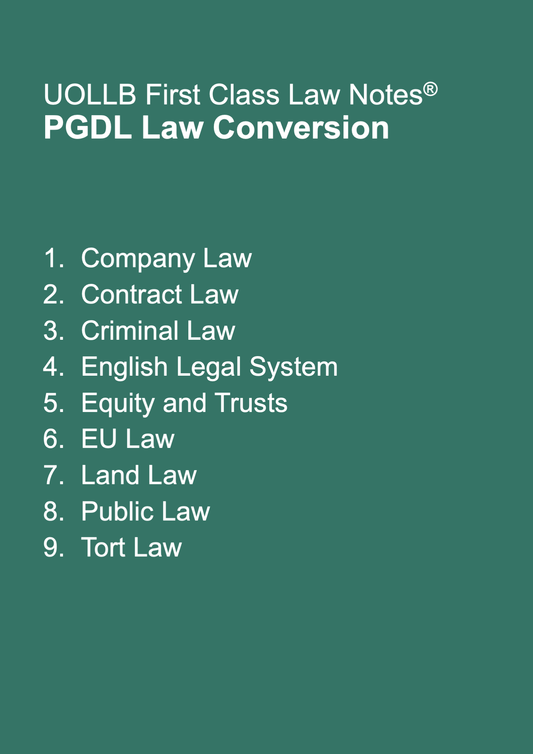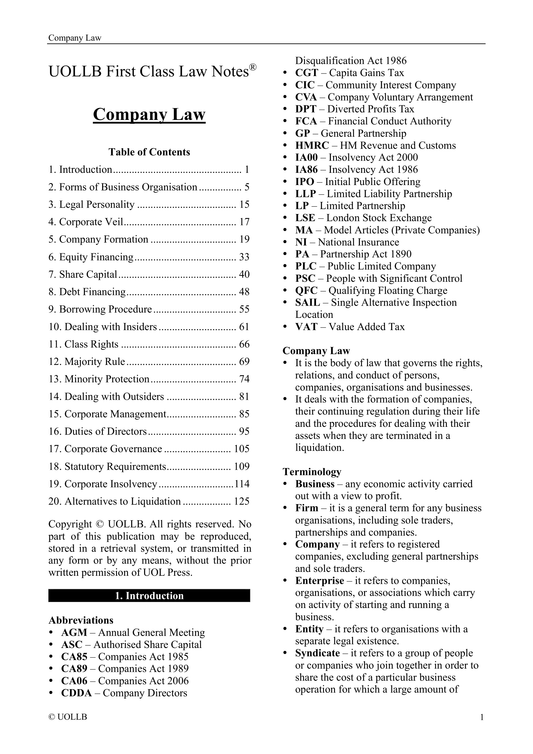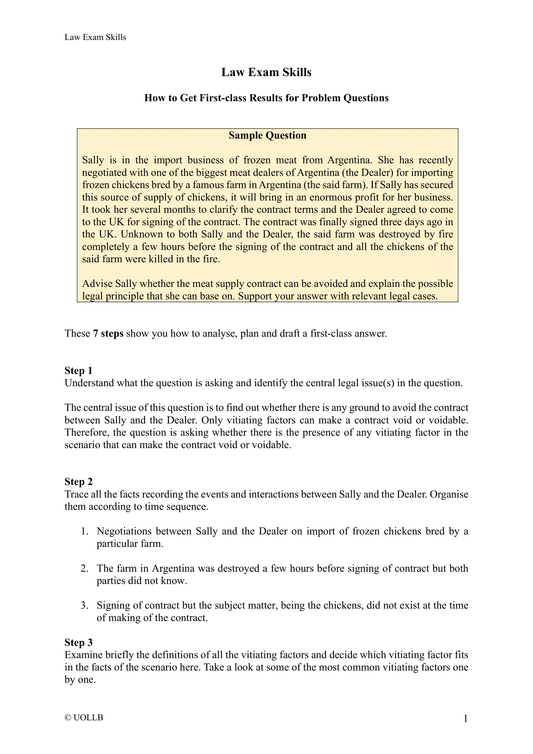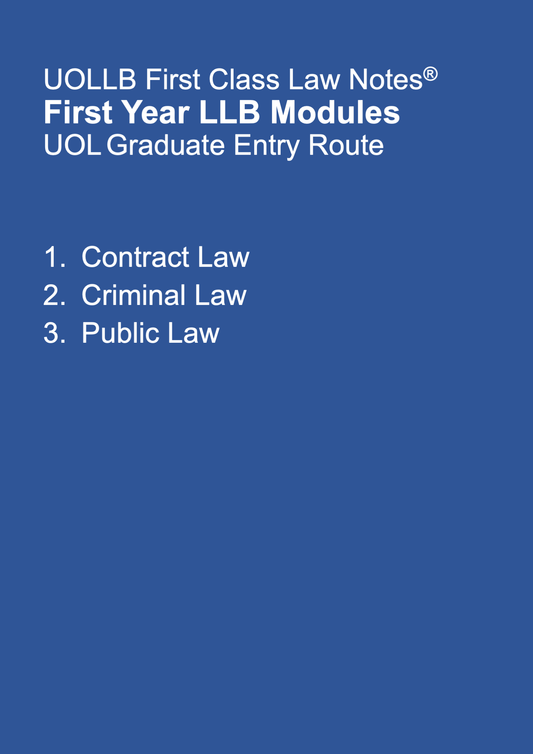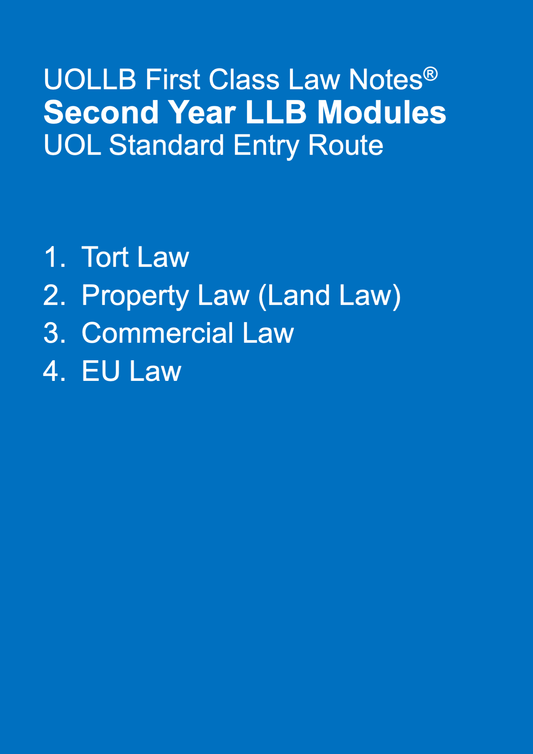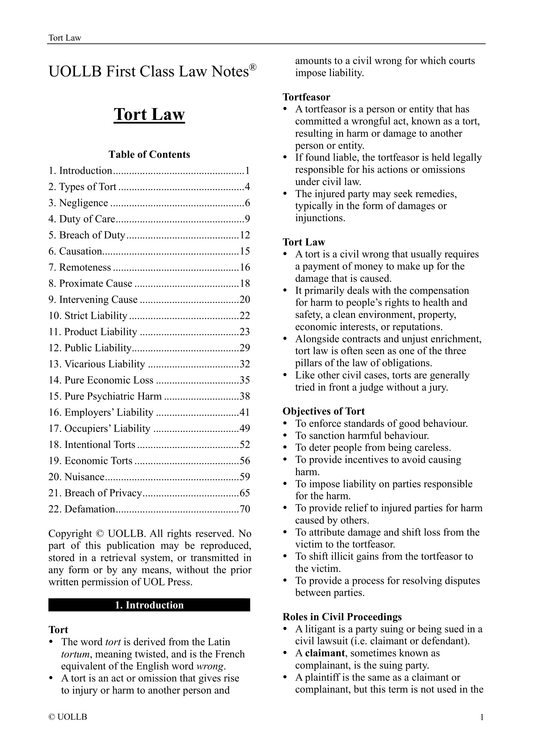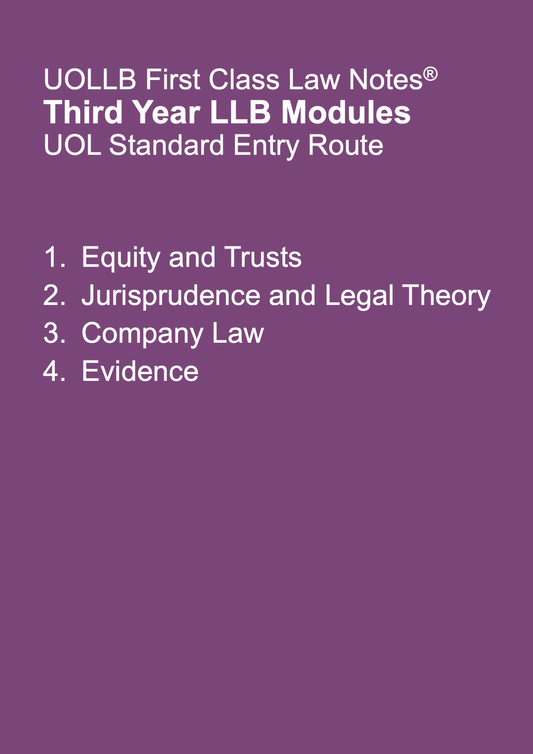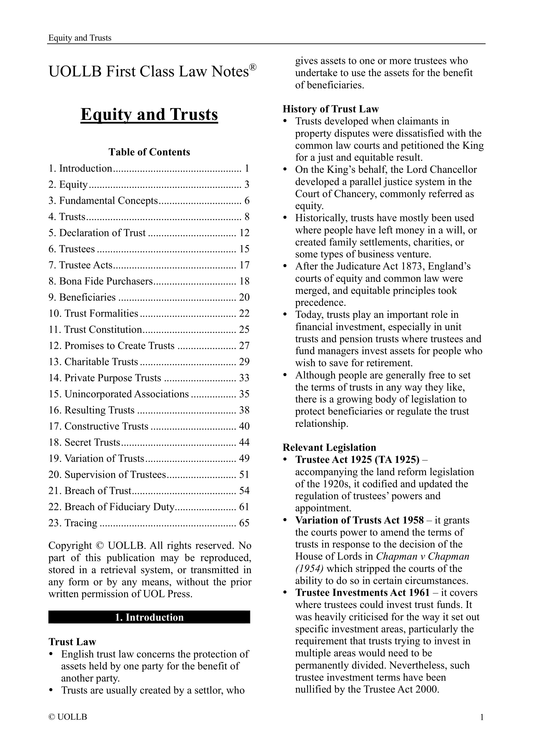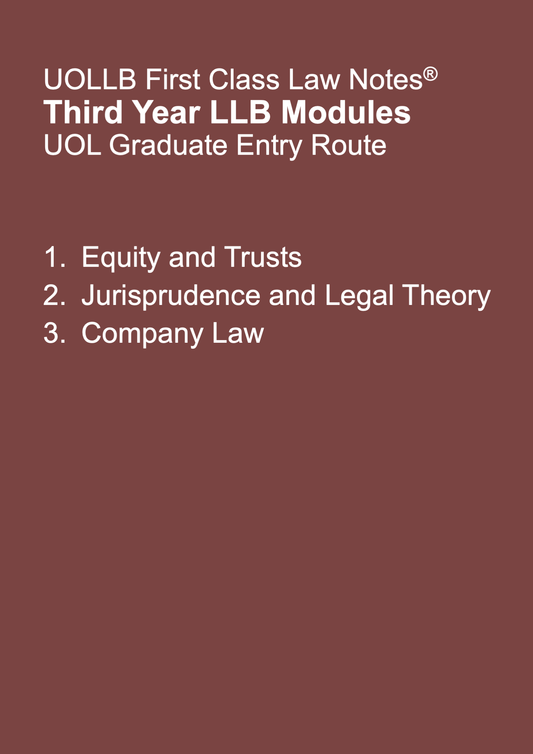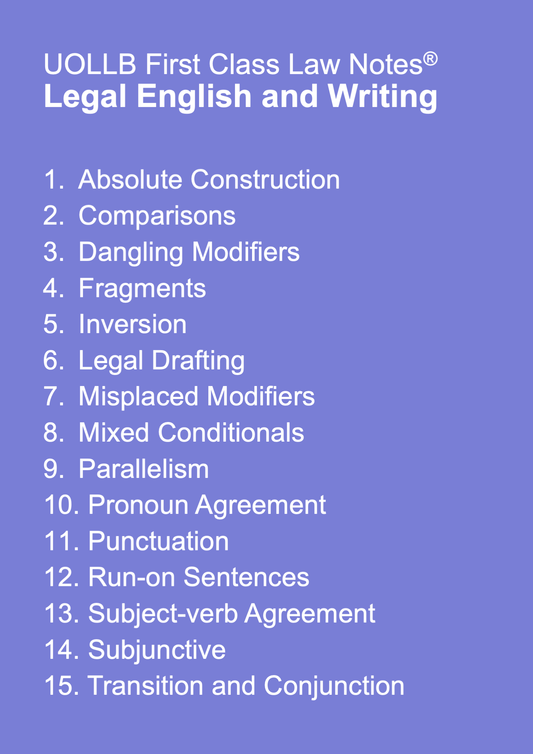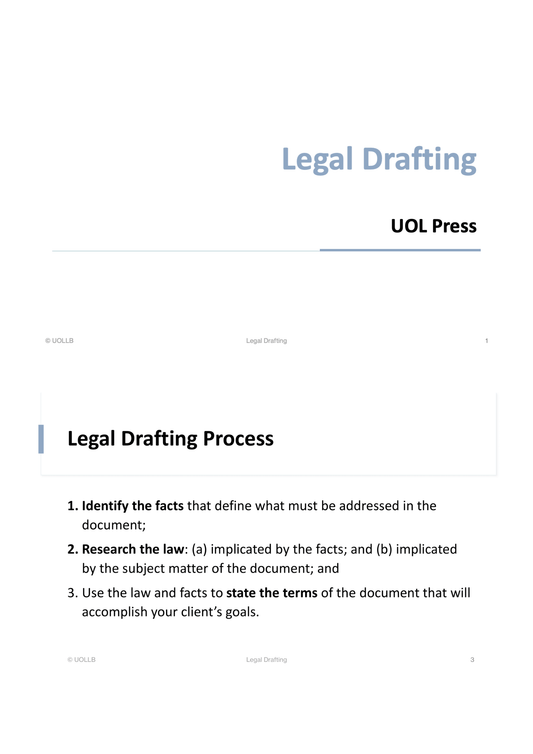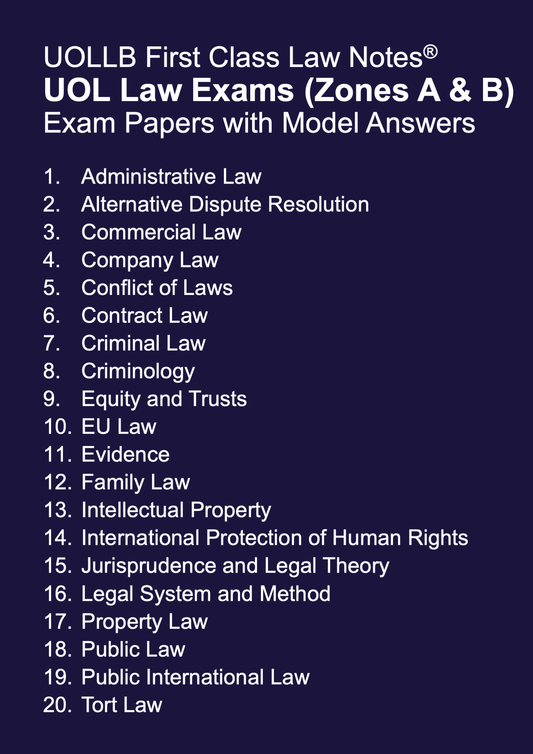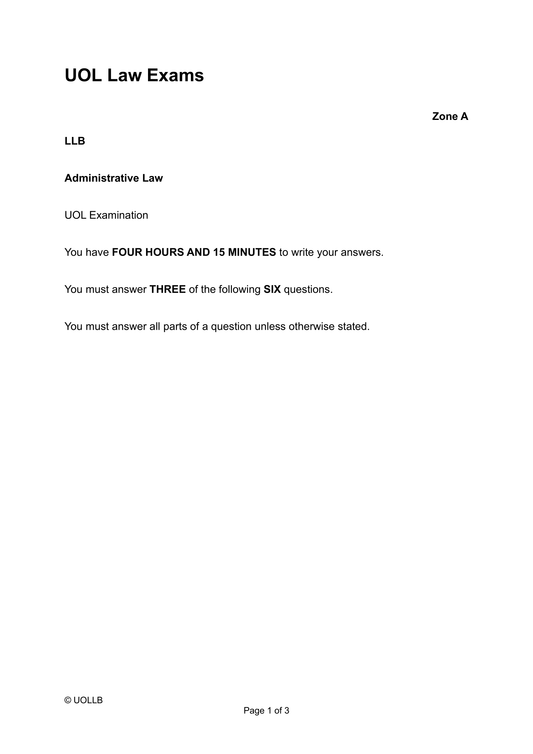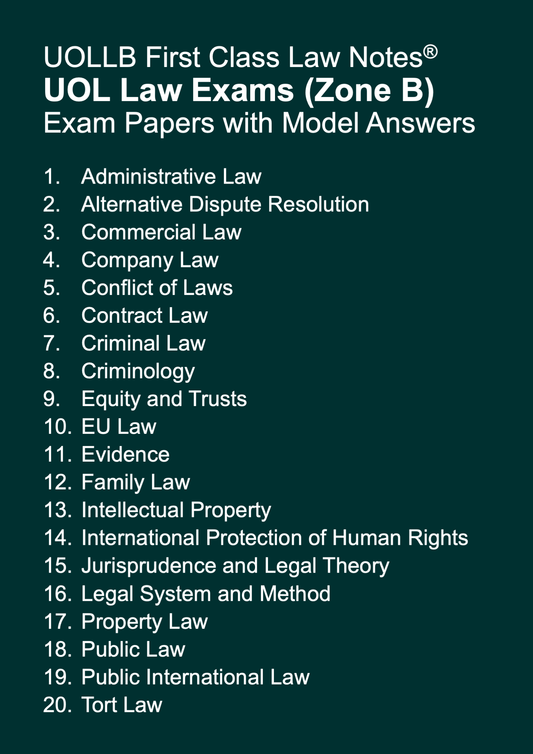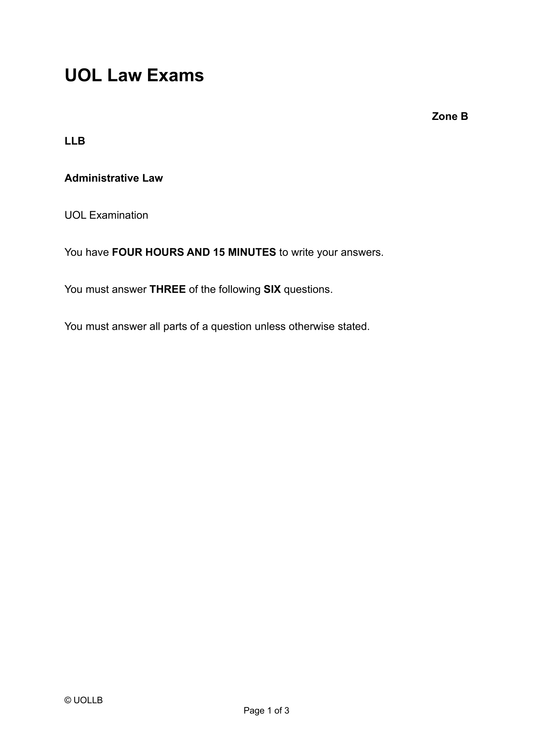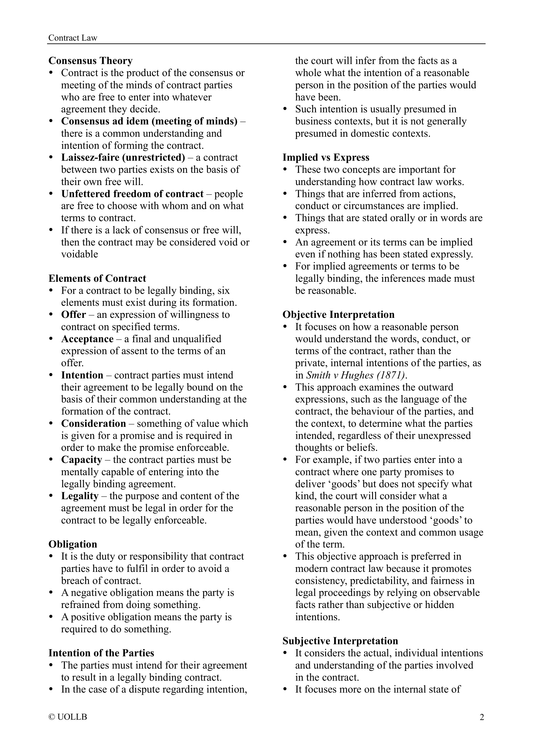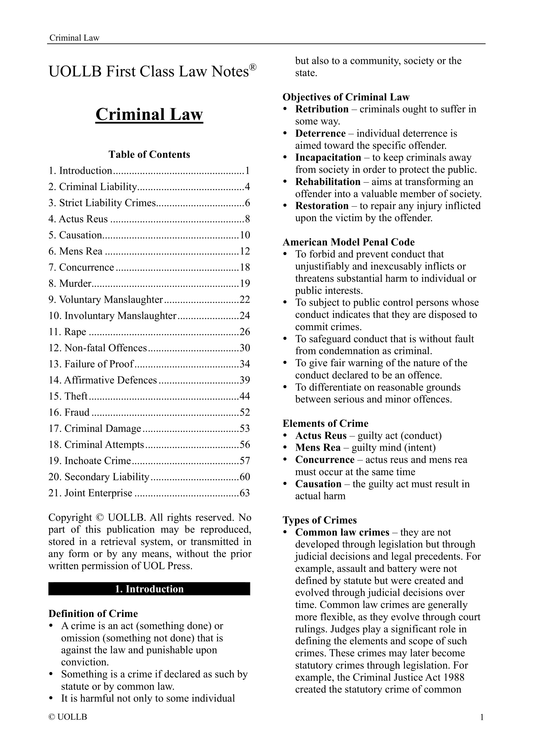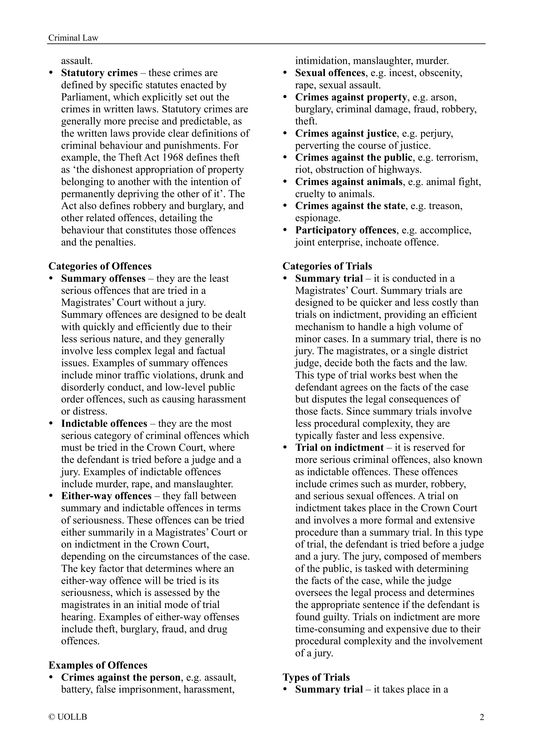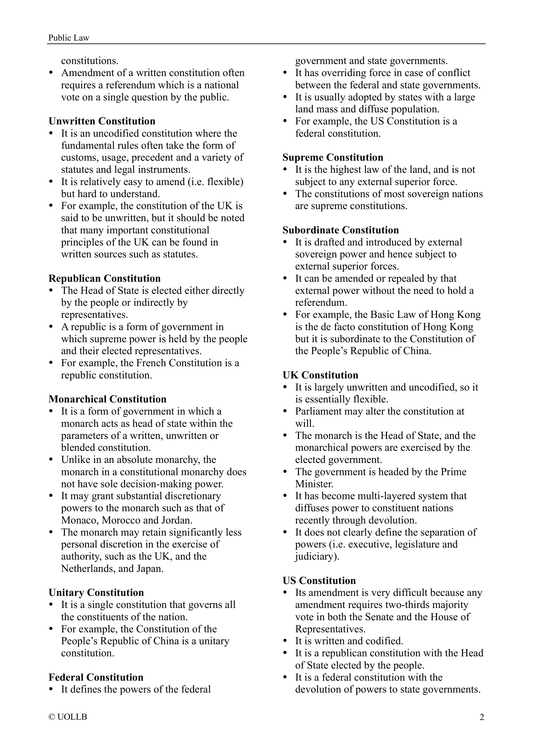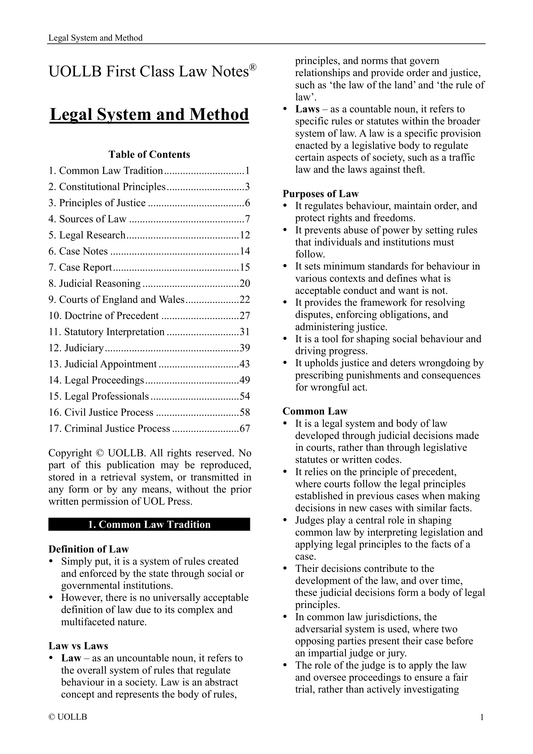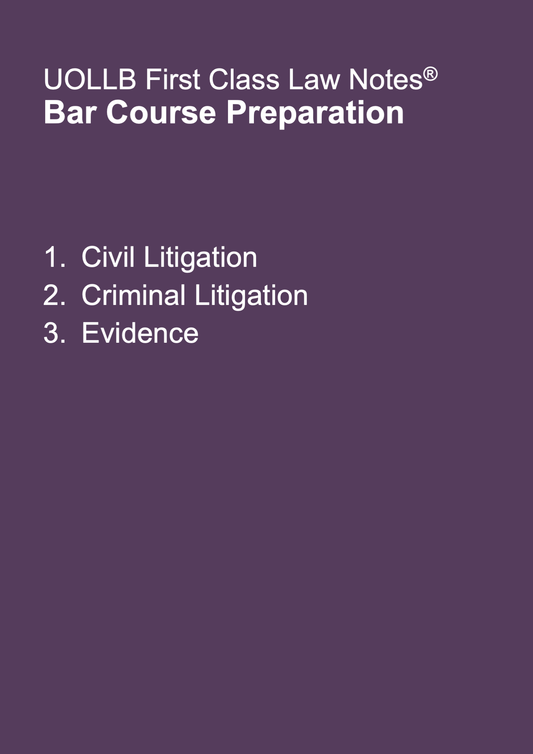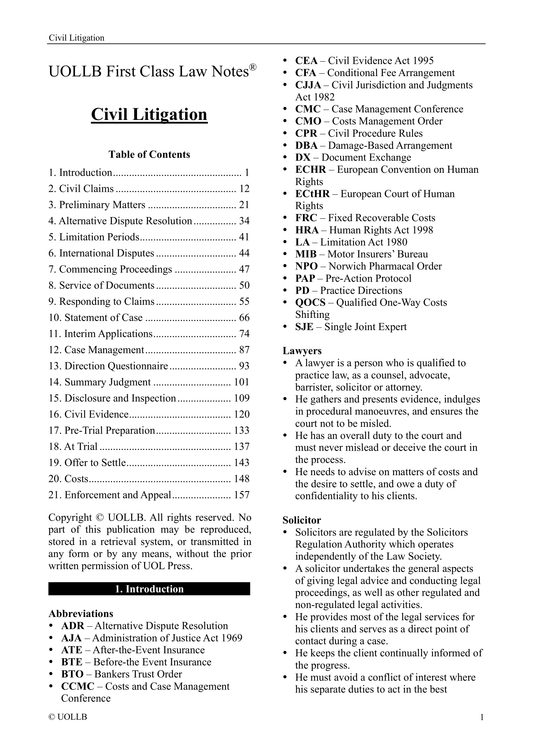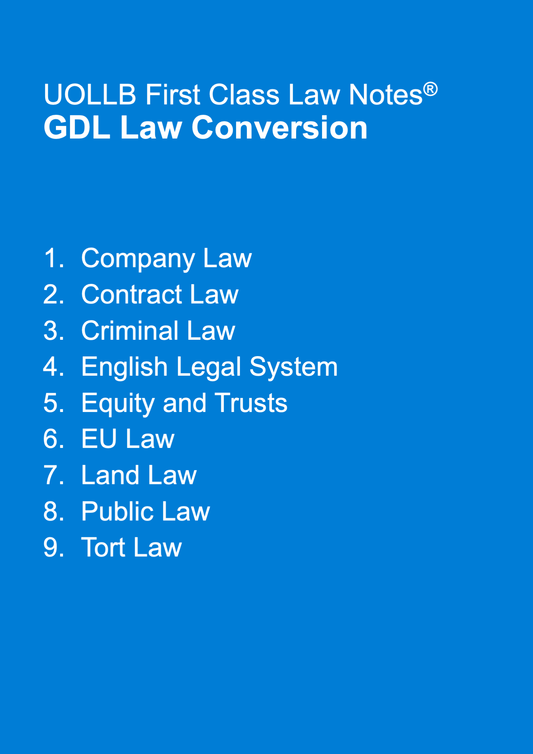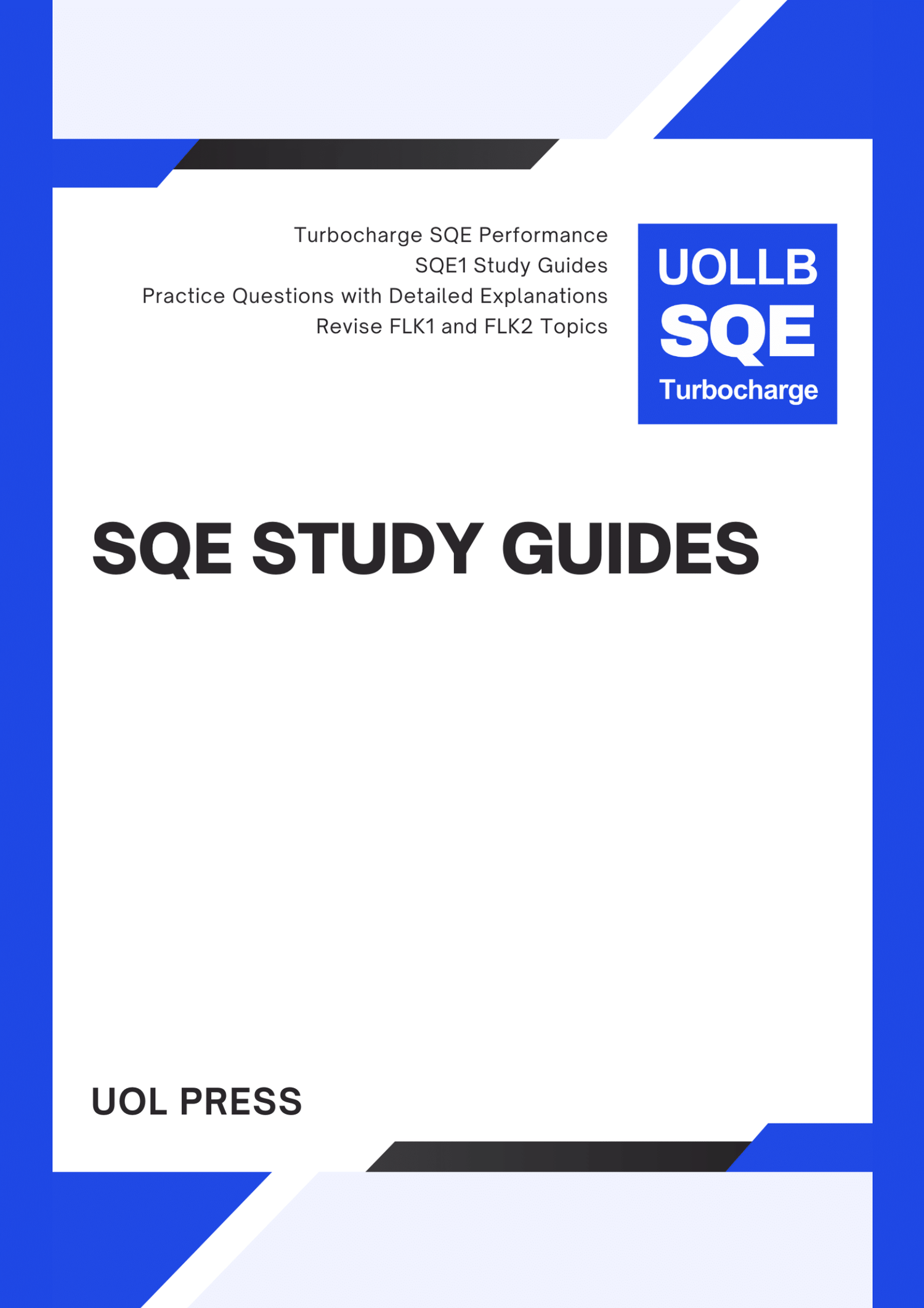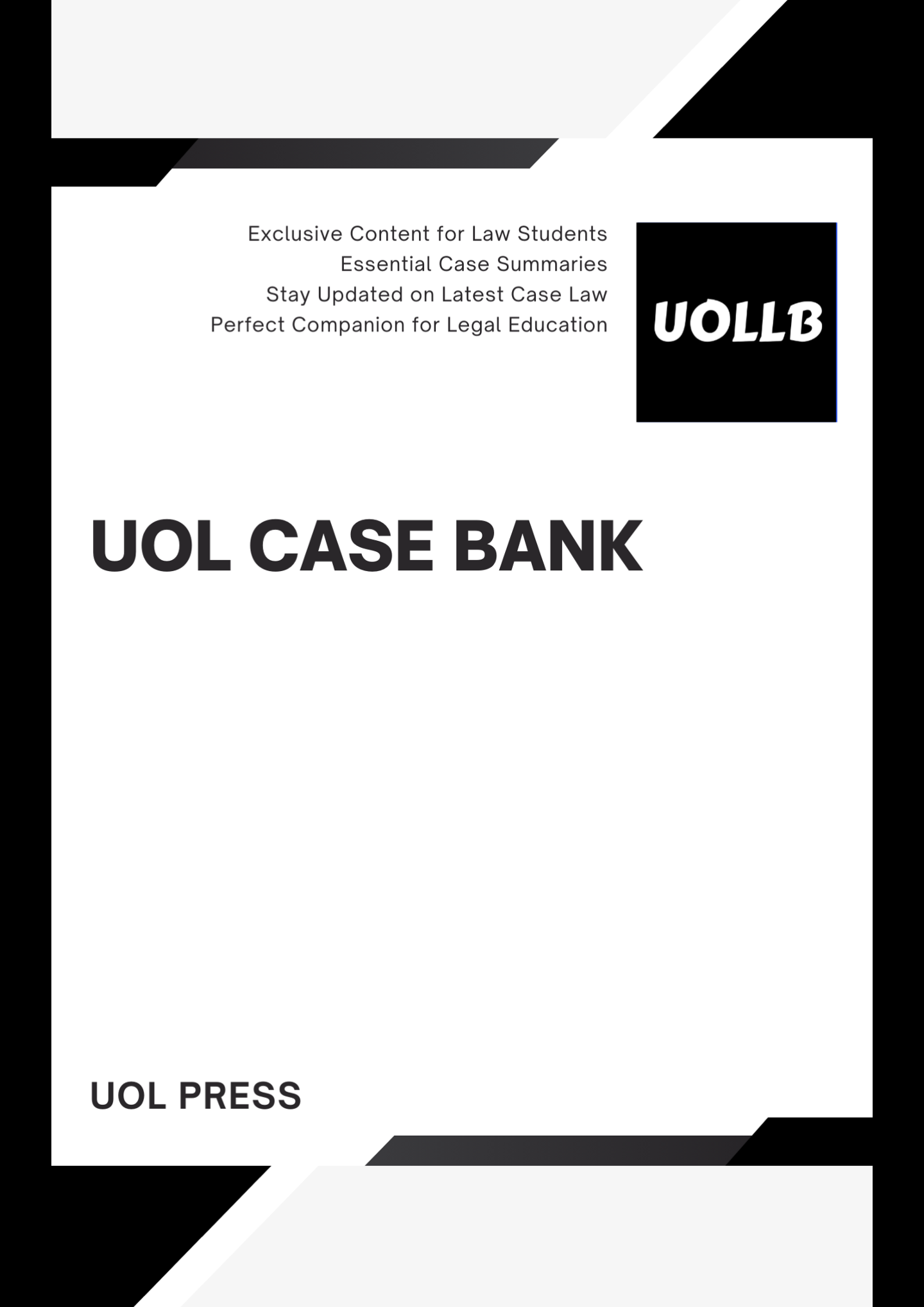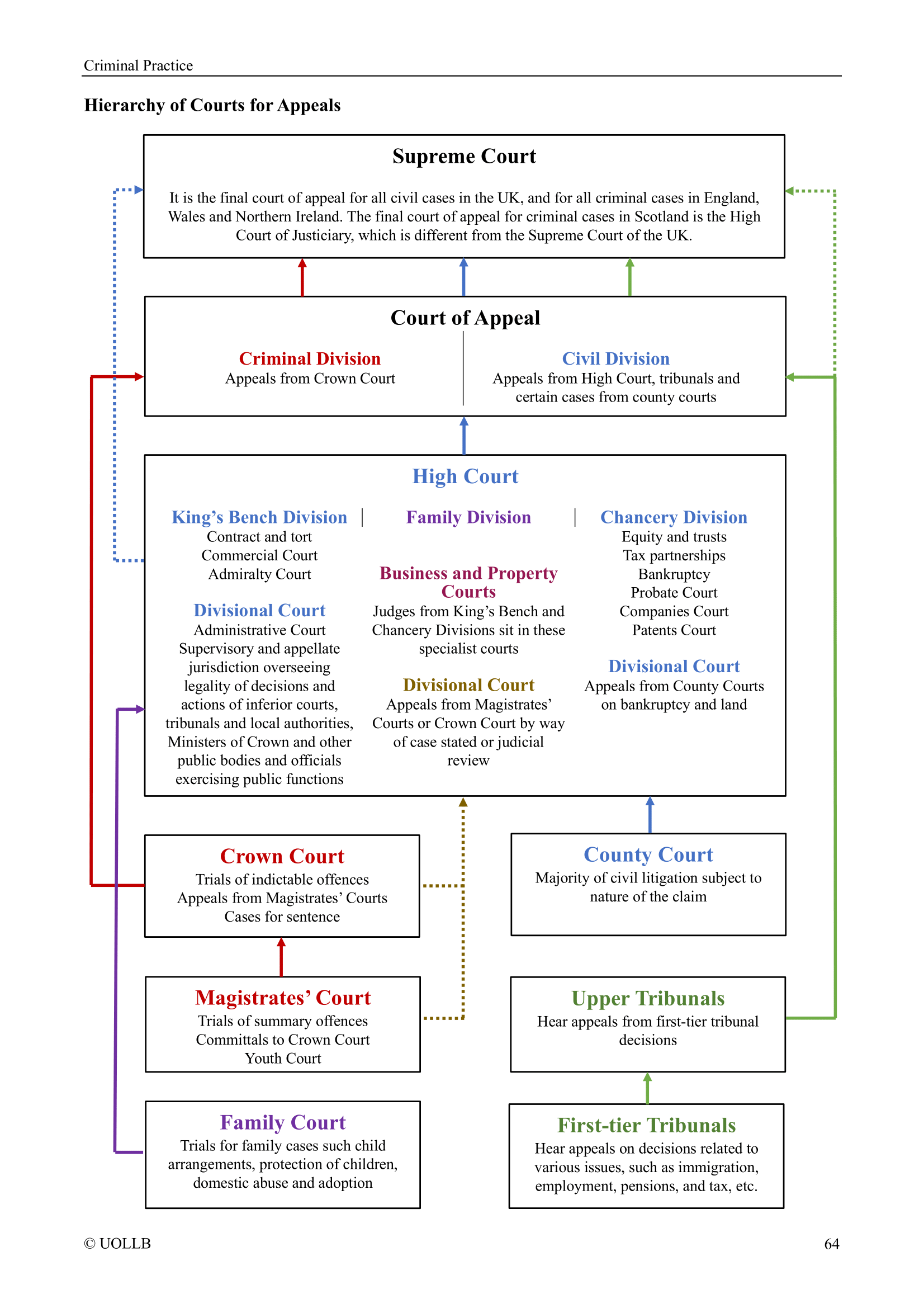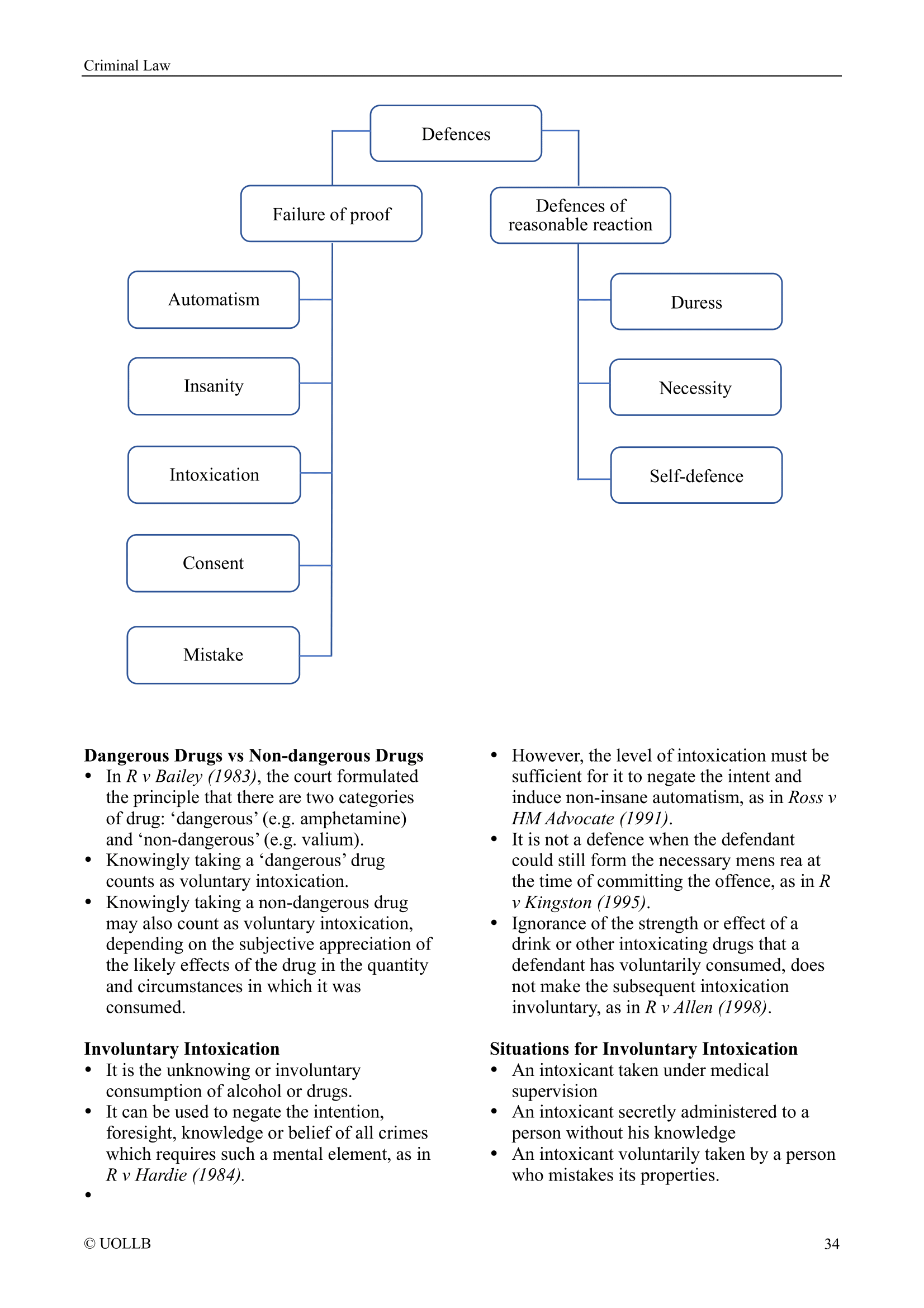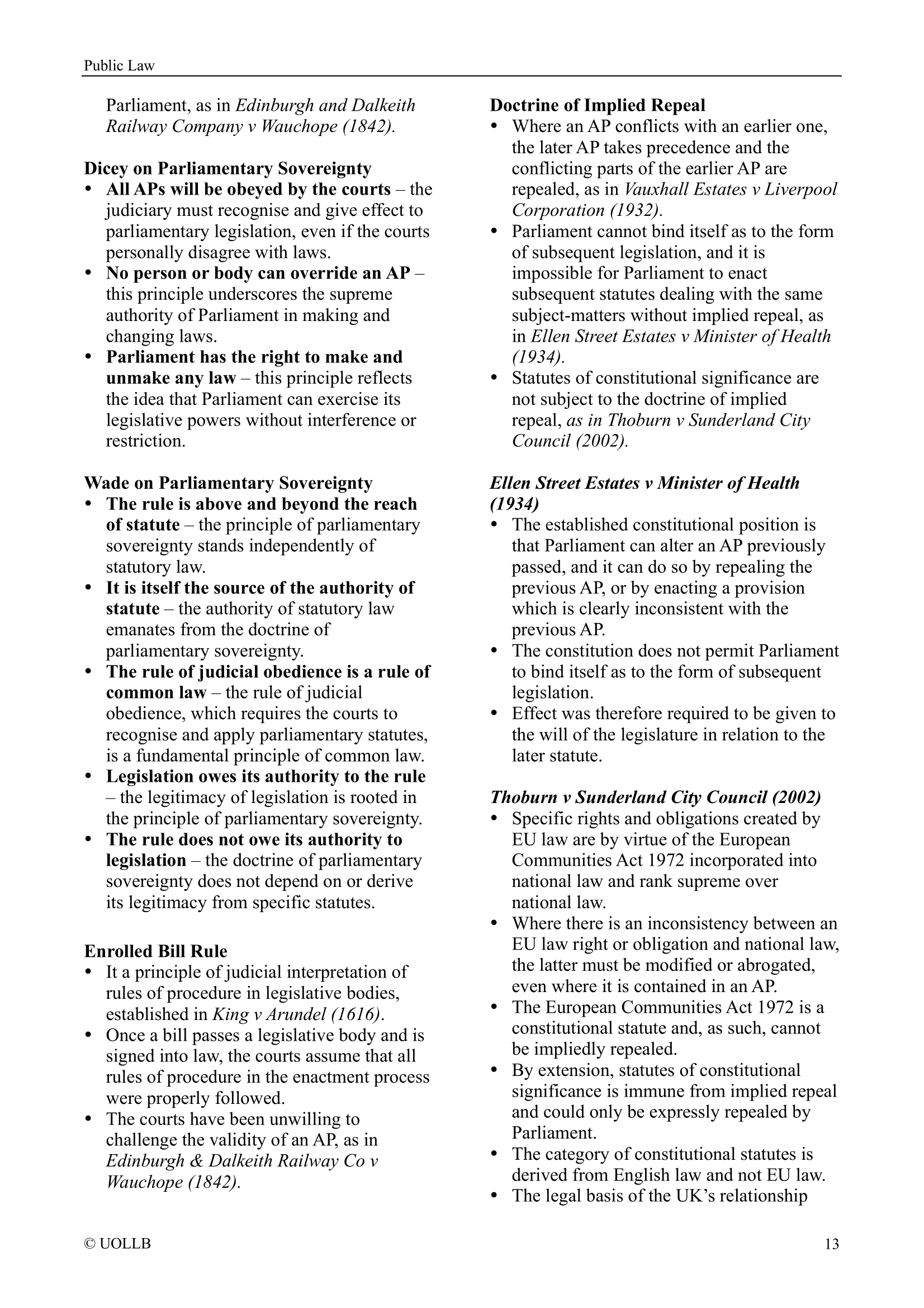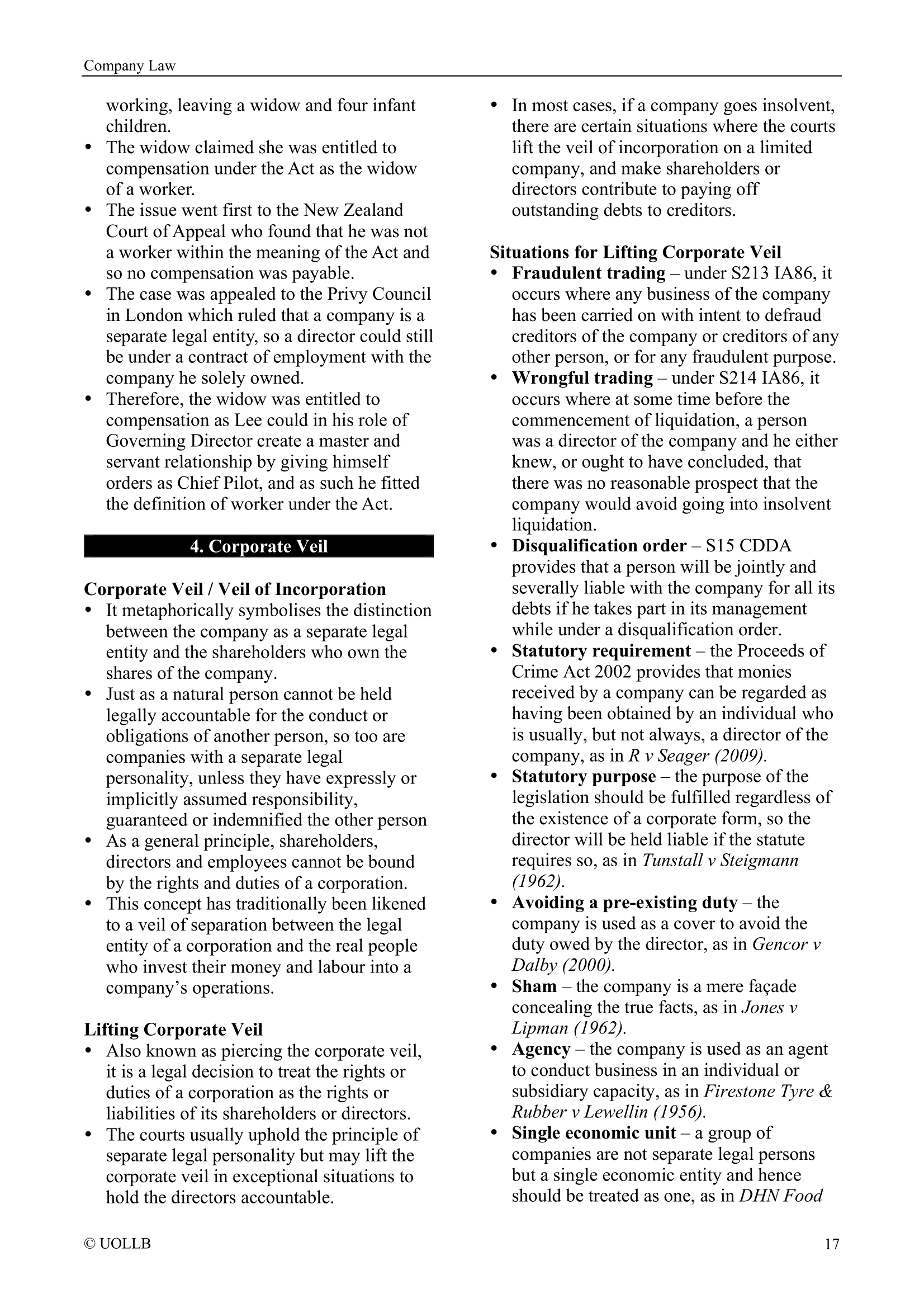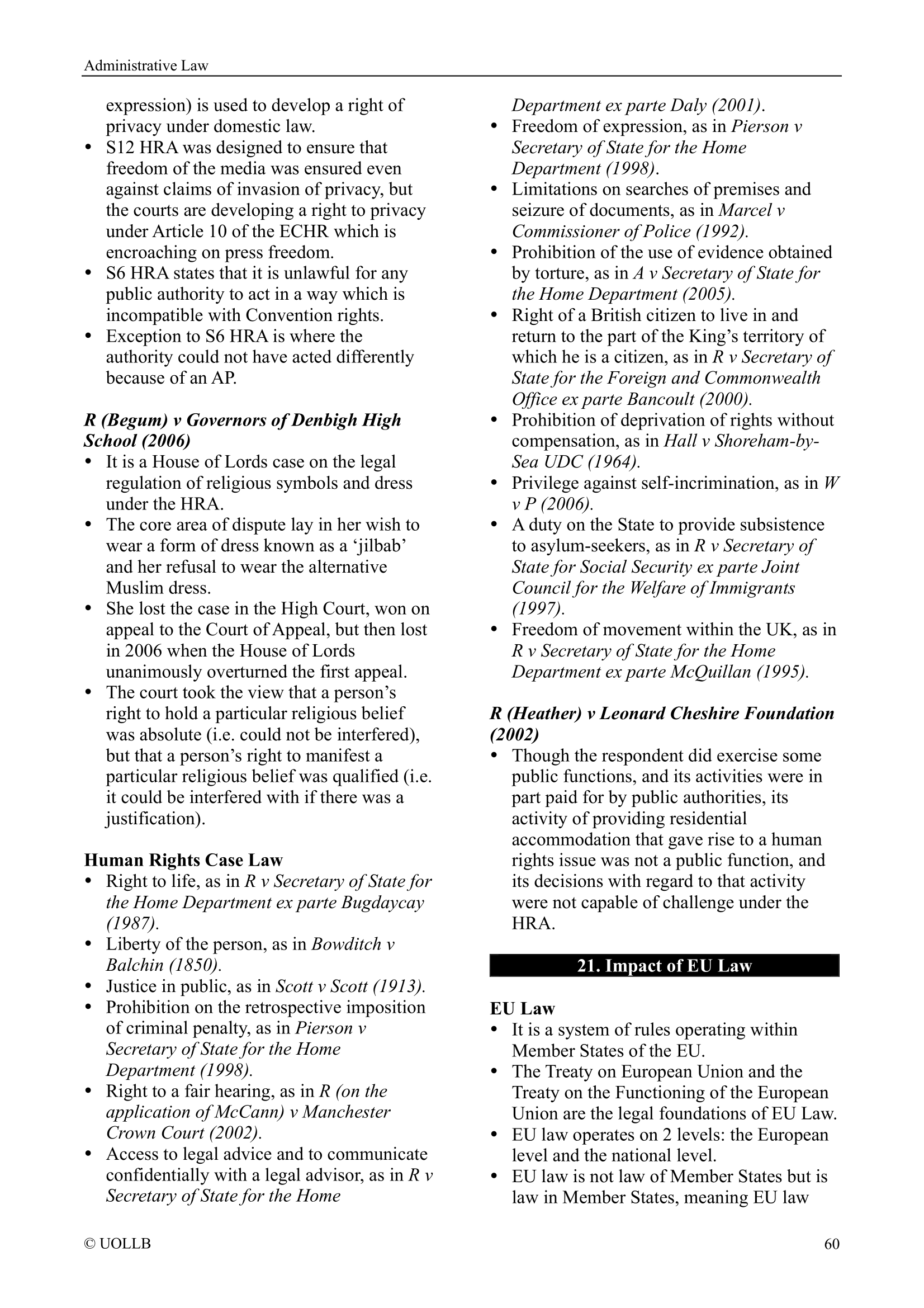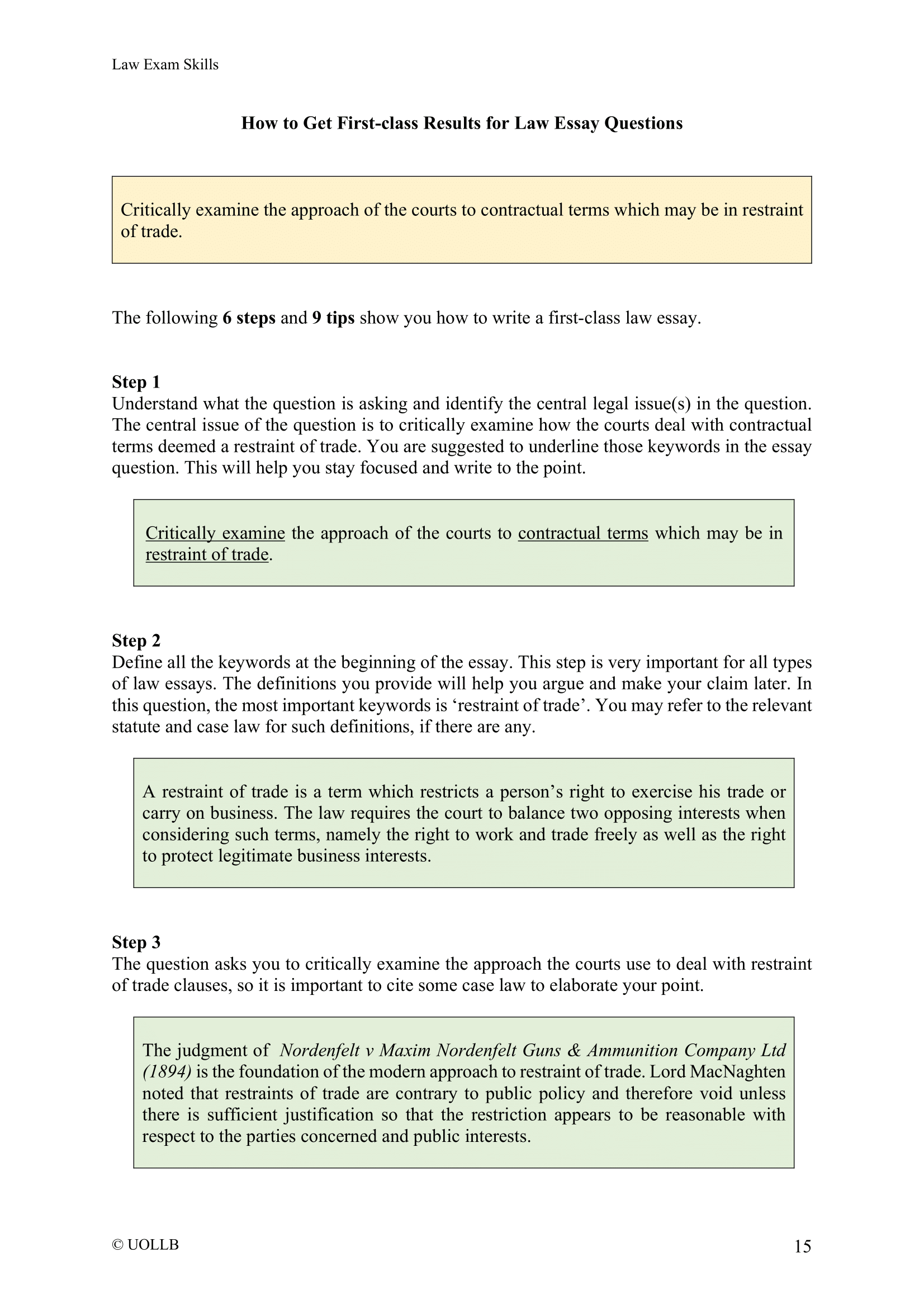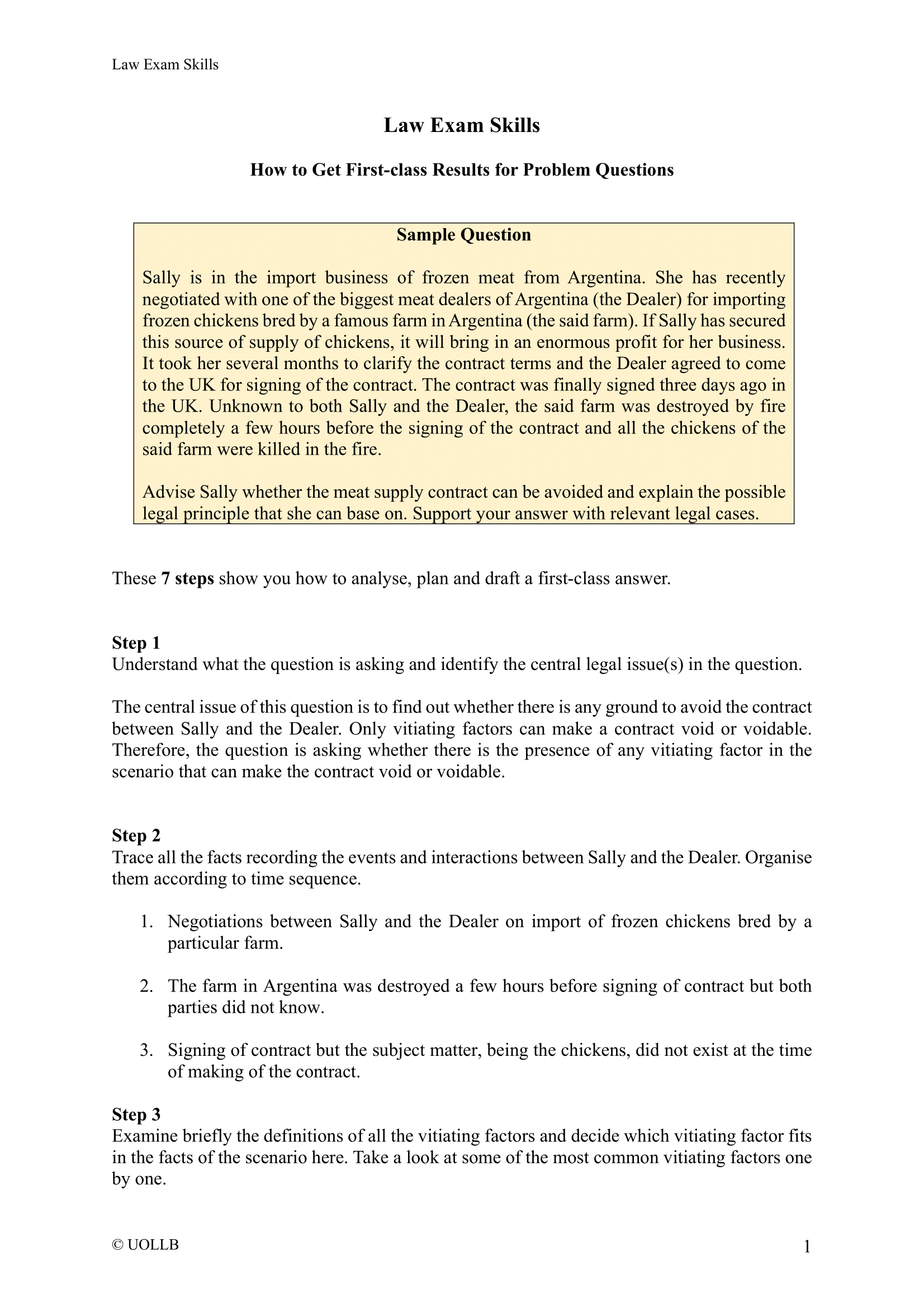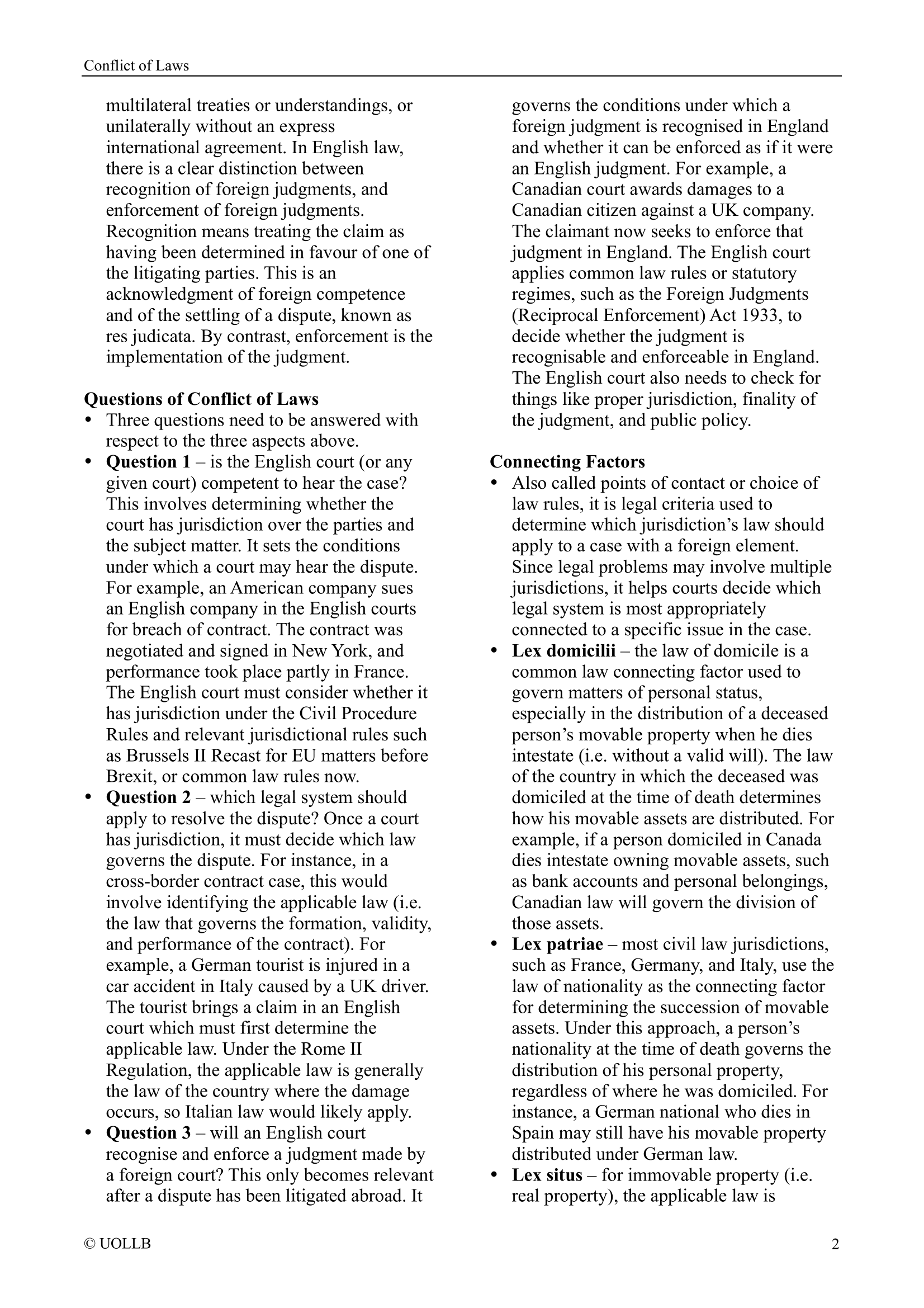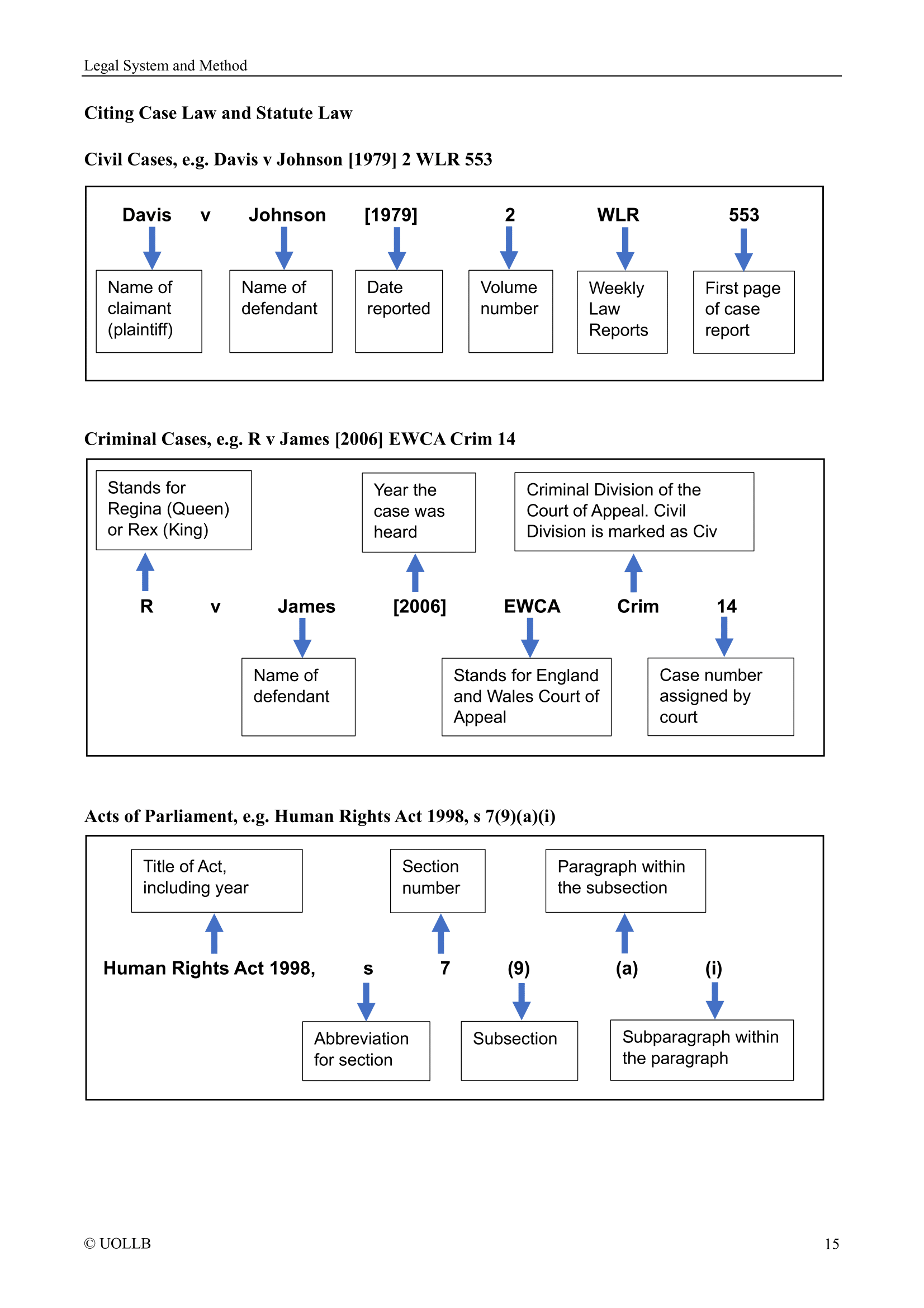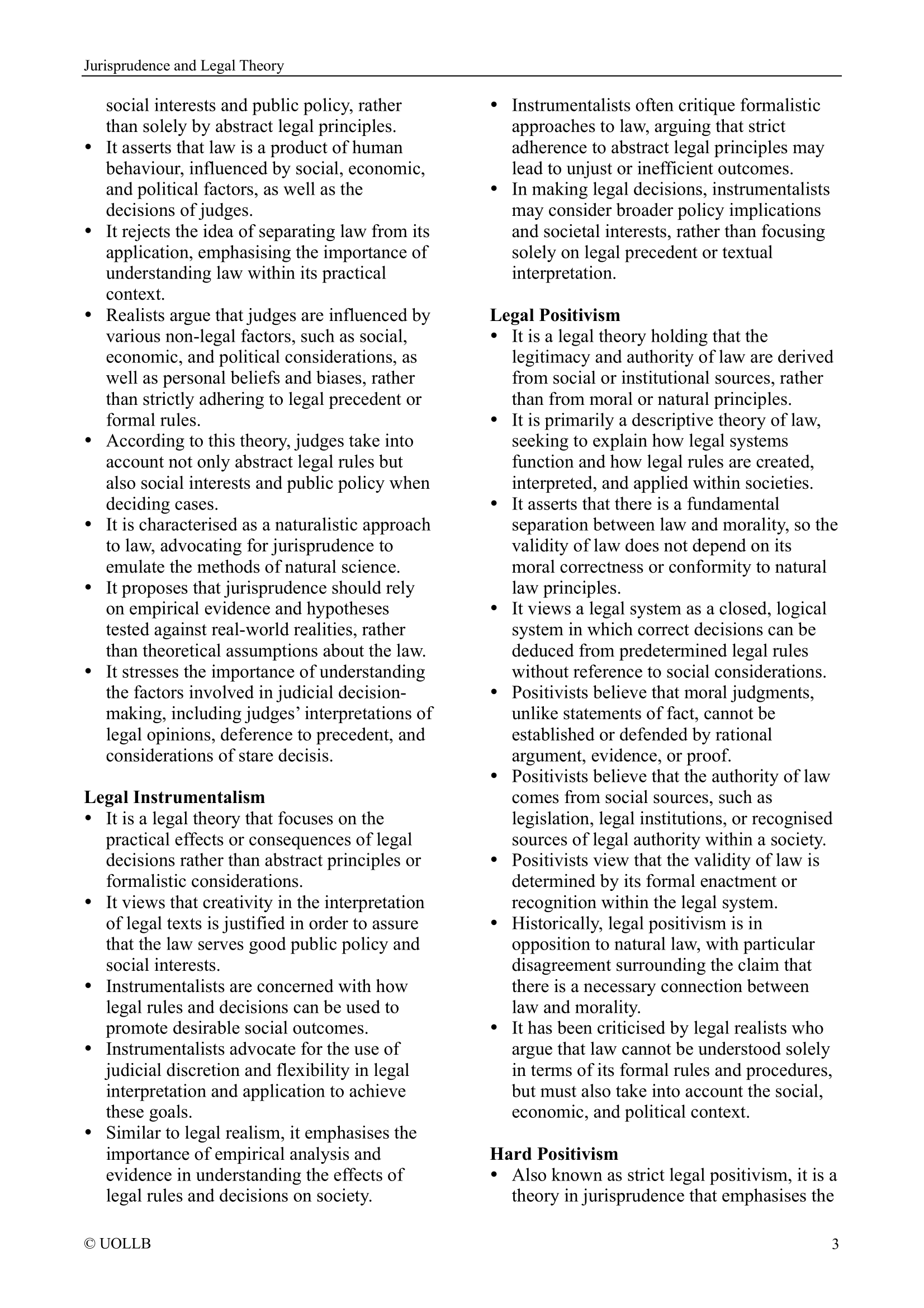Top 40 English Tort Law Cases
Share
1. Donoghue v Stevenson [1932] AC 562
The cornerstone of modern negligence law, this case established the neighbour principle. Mrs Donoghue consumed ginger beer containing a decomposed snail and sued the manufacturer despite lacking a contract. Lord Atkin held that manufacturers owe a duty of care to ultimate consumers, formulating the principle that one must take reasonable care to avoid acts or omissions reasonably foreseeable as likely to injure their neighbours. This case created the foundation of negligence liability in English law, shaping countless future developments in tort.
2. Caparo Industries plc v Dickman [1990] 2 AC 605
Caparo sought to purchase shares in Fidelity, relying on company accounts audited by Dickman. The accounts were negligently prepared, but the House of Lords held that auditors did not owe a duty to individual shareholders relying on accounts for investment purposes. The court developed the Caparo three-part test: (1) foreseeability of harm, (2) proximity between claimant and defendant, and (3) whether it is fair, just, and reasonable to impose a duty. This case refined negligence principles beyond Donoghue v Stevenson.
3. Anns v Merton LBC [1978] AC 728
Tenants claimed against the local authority for failing to inspect building foundations, which caused structural damage. Lord Wilberforce’s judgment proposed a two-stage test for duty of care: (1) sufficient relationship of proximity between claimant and defendant, and (2) considerations that ought to limit or negate the duty. Although later overruled in Murphy v Brentwood DC, Anns was influential in expanding negligence liability and is often studied to illustrate the tension between judicial activism and restraint in tort law development.
4. Murphy v Brentwood DC [1991] 1 AC 398
Murphy’s house suffered structural damage due to negligent inspection by the local authority. He claimed for pure economic loss (diminution in property value). The House of Lords overruled Anns v Merton LBC, holding that economic loss resulting from defects in property is not recoverable in negligence absent physical injury or damage to other property. The case confirmed the exclusion of pure economic loss in negligence and reined back the expansion of liability, shaping modern limits on duty of care.
5. Hedley Byrne & Co Ltd v Heller & Partners Ltd [1964] AC 465
Advertising agency Hedley Byrne relied on a bank reference provided by Heller, which turned out to be negligently given. The House of Lords recognised that a duty of care can arise in respect of negligent misstatements, creating liability for pure economic loss where there is a “special relationship” involving reliance and assumption of responsibility. However, Heller escaped liability due to an effective disclaimer. The case established a new category of duty of care, central to professional negligence claims.
6. Bolam v Friern Hospital Management Committee [1957] 1 WLR 582
Mr Bolam underwent electro-convulsive therapy without muscle relaxants and suffered injury. He claimed negligence against the hospital. McNair J articulated the Bolam test: a doctor is not negligent if acting in accordance with a practice accepted as proper by a responsible body of medical professionals skilled in that particular art. This case established the benchmark for medical negligence and professional standards, later refined in Bolitho v City and Hackney HA regarding logical defensibility of medical opinion.
7. Bolitho v City and Hackney HA [1998] AC 232
A child died after doctors failed to attend, and expert evidence suggested that even if they had, intubation might not have been performed. The House of Lords held that the Bolam test is not absolute; courts may reject medical opinion if it is not capable of withstanding logical analysis. Bolitho ensures that professional opinion cannot shield negligence if it is unreasonable. It balances judicial oversight with deference to medical expertise, refining the scope of liability in professional negligence cases.
8. Wilsher v Essex AHA [1988] AC 1074
A premature baby was negligently given excess oxygen, leading to blindness. However, there were multiple possible causes of the injury. The House of Lords held that the claimant must prove, on the balance of probabilities, that the defendant’s breach caused the harm. Where multiple possible causes exist, liability is not established unless one cause can be shown as more likely than not. The case is pivotal for understanding causation in medical negligence and the limitations of liability where causation is uncertain.
9. Barnett v Chelsea & Kensington Hospital [1969] 1 QB 428
Three night-watchmen attended hospital after drinking contaminated tea. The hospital negligently failed to examine them, and one later died of arsenic poisoning. The court held that the hospital was not liable, as the patient would have died regardless of the negligence. This case established the “but for” test of causation: the claimant must prove that the harm would not have occurred but for the defendant’s breach. It remains a leading authority on factual causation in negligence.
10. Fairchild v Glenhaven Funeral Services Ltd [2002] UKHL 22
Employees contracted mesothelioma after exposure to asbestos by multiple employers. Medical science could not determine which employer’s exposure caused the disease. The House of Lords created an exception to the “but for” rule, holding that each employer who materially increased the risk of harm could be held liable. This case demonstrates judicial flexibility in dealing with evidential gaps in causation, later refined in Barker v Corus and addressed by the Compensation Act 2006 for mesothelioma claims.
11. Nettleship v Weston [1971] 2 QB 691
A learner driver injured her instructor during a driving lesson. The Court of Appeal held that learner drivers are judged by the standard of the competent, experienced driver, not a lower standard due to inexperience. The case illustrates the objective nature of the standard of care in negligence: personal characteristics (like being a learner) generally do not reduce the standard required. It remains a leading authority on the strictness of the reasonable person test in negligence law.
12. Paris v Stepney Borough Council [1951] AC 367
Mr Paris, who had sight in only one eye, was injured when metal entered his good eye at work. The council failed to provide protective goggles. The House of Lords held that because the potential severity of injury was higher for Mr Paris, the employer owed a duty to take additional precautions. This case shows that the standard of care takes into account the seriousness of potential harm, even if the likelihood of occurrence is low, emphasising employer responsibility in negligence.
13. Latimer v AEC Ltd [1953] AC 643
Flooding left a factory floor slippery. The employer used sawdust to reduce risk, but an employee slipped and was injured. The House of Lords held the employer was not negligent, as reasonable precautions had been taken. The duty is to take reasonable steps, not eliminate all risks. This case illustrates the balance between risk and cost of precautions in determining breach of duty, highlighting that the law does not impose an unreasonable burden on defendants in negligence claims.
14. Miller v Jackson [1977] QB 966
Residents complained about cricket balls frequently landing in their garden. The Court of Appeal considered whether cricketing activities constituted a nuisance. The majority found nuisance but refused an injunction due to the social utility of cricket, awarding damages instead. Lord Denning dissented, emphasising the value of sport and community activities. This case illustrates the balancing of competing interests in private nuisance: the claimant’s right to enjoyment of land versus the wider public benefit of the defendant’s conduct.
15. Cambridge Water Co Ltd v Eastern Counties Leather plc [1994] 2 AC 264
Leather tanning chemicals seeped into groundwater, contaminating Cambridge Water’s supply. The House of Lords held the defendant was not liable under Rylands v Fletcher as the damage was not reasonably foreseeable. The case redefined strict liability under Rylands, integrating negligence principles by requiring foreseeability of damage. It also limited the doctrine’s scope, aligning it more closely with nuisance law. This decision marked a turning point in environmental torts, restricting absolute liability in favour of foreseeability-based reasoning.
16. Rylands v Fletcher (1868) LR 3 HL 330
The defendants built a reservoir which flooded the claimant’s mine due to defective construction. The House of Lords held that anyone who brings onto their land something likely to cause mischief if it escapes must keep it at their peril. If it escapes, they are strictly liable for damage. This case created the doctrine of strict liability for non-natural use of land. Though later restricted, it remains a classic principle of English tort law and environmental liability.
17. Blyth v Birmingham Waterworks Co (1856) 11 Exch 781
Frost caused water mains to burst, flooding the claimant’s property. The company had installed pipes consistent with contemporary standards. Alderson B famously defined negligence as failing to do what a reasonable person would do, or doing something a prudent person would not. The defendants were not liable because the extreme frost was unforeseeable. This case is central for articulating the reasonable person standard, which remains the foundation of the breach of duty test in negligence cases.
18. Lister v Hesley Hall Ltd [2001] UKHL 22
A warden employed at a boarding school sexually abused children. The House of Lords held that the school was vicariously liable, as the wrongful acts were closely connected with his employment duties. The decision expanded the scope of vicarious liability beyond traditional notions of “authorised acts,” focusing on the close connection test. This case is key for employer liability, particularly in contexts involving abuse, and demonstrates the courts’ willingness to impose liability where employment creates or enhances risk.
19. Wheat v Lacon [1966] AC 552
A tenant fell and died on a staircase with inadequate lighting in a pub managed by Lacon. The House of Lords defined “occupier” broadly under the Occupiers’ Liability Act 1957 as anyone with sufficient control over premises. Both the brewery owners and pub managers could be considered occupiers. The case established that multiple parties may owe a duty of care to lawful visitors, illustrating the flexible approach to defining occupiers. It remains a foundational case in occupiers’ liability law.
20. The Wagon Mound (No 1) [1961] AC 388
Oil spilled from the defendant’s ship in Sydney Harbour and drifted to a wharf, where it ignited and caused fire damage. The Privy Council held the defendant was not liable for fire damage because it was not a reasonably foreseeable consequence of the spill. The case established the test of remoteness in negligence: defendants are only liable for damage that is reasonably foreseeable, not for remote or unforeseeable consequences. It reshaped remoteness from directness (Re Polemis) to foreseeability.
21. The Wagon Mound (No 2) [1967] 1 AC 617
Following Wagon Mound (No 1), shipowners again spilled furnace oil into Sydney Harbour. This time, the claimants were wharf owners whose property was damaged by fire. Although the probability of fire was small, evidence showed it was foreseeable and easy precautions could have been taken to prevent it. The Privy Council held the defendants liable, clarifying that even a low probability risk, if foreseeable and easily preventable, may result in liability. The case refined negligence law by stressing that foreseeability must be balanced with practicality of precautions.
22. Barker v Corus (UK) plc [2006] UKHL 20
Expanding on Fairchild, the House of Lords held that liability for mesothelioma should be several, not joint and several. Each employer was liable only for the proportion of risk they created. This ruling reduced claimants’ compensation, as recovery depended on each defendant’s solvency. Parliament swiftly reversed this outcome through the Compensation Act 2006, imposing joint and several liability. Barker illustrates the judicial-legislative dialogue in tort law and the struggle between principles of fairness, causation, and practical justice in asbestos cases.
23. Chester v Afshar [2004] UKHL 41
Ms Chester underwent surgery without being warned of a small but serious risk, which materialised. She argued she would have delayed surgery had she been informed. The House of Lords held that causation was satisfied: failure to warn was a breach of duty, and it was sufficient that the risk materialised from the operation performed. This case significantly developed informed consent in medical negligence, emphasising patient autonomy. It paved the way for Montgomery v Lanarkshire Health Board in recognising patients’ rights to information.
24. Montgomery v Lanarkshire Health Board [2015] UKSC 11
A diabetic mother was not informed of the increased risk of shoulder dystocia during vaginal delivery. Her baby suffered severe disabilities. The Supreme Court held that doctors must disclose material risks a reasonable patient would consider significant, not merely follow professional practice (Bolam no longer suffices for consent). This landmark ruling firmly established patient autonomy in medical law, shifting the standard from medical paternalism to a patient-centred approach. It is now the leading case on informed consent in negligence.
25. Gregg v Scott [2005] UKHL 2
The claimant’s negligent misdiagnosis reduced his chance of surviving cancer from 42% to 25%. He argued for loss of a chance. The House of Lords rejected this, confirming that negligence requires proof of causation on the balance of probabilities (greater than 50%). Loss of a chance of recovery in medical negligence is not compensable. This decision highlights the strictness of the “all or nothing” approach in causation and remains controversial, with critics arguing it unfairly disadvantages medical negligence victims.
26. JD v East Berkshire Community Health NHS Trust [2005] UKHL 23
Parents wrongly suspected of child abuse claimed psychiatric harm from negligent investigations by doctors and social workers. The House of Lords held that professionals owed a duty of care to the children, not the parents. Concerns about conflicting duties and defensive practice meant parents could not claim. This case clarified the limits of duty of care where competing interests exist, particularly in child protection contexts, showing courts’ reluctance to expand negligence into sensitive policy-driven areas.
27. Barrett v Enfield LBC [2001] 2 AC 550
A claimant who had been in local authority care sued for negligence in handling his upbringing. The House of Lords held that local authorities could owe a duty of care in managing children in care, though the claim ultimately failed on facts. This case is significant for confirming that public authorities are not immune from negligence claims, though liability is carefully limited by considerations of justiciability, policy, and resource allocation. It reflects the courts’ nuanced approach post-HRA 1998.
28. Mitchell v Glasgow City Council [2009] UKHL 11
A tenant was killed by a violent neighbour. The council knew of the neighbour’s aggression but did not warn the deceased before a meeting escalating tensions. The House of Lords held no duty to warn of a third party’s criminal acts absent assumption of responsibility. The decision reflects courts’ reluctance to impose liability for third-party wrongs, especially on public authorities, unless control or assumption of responsibility is established. It highlights limits on duty of care in negligence involving criminal conduct.
29. Robinson v Chief Constable of West Yorkshire [2018] UKSC 4
An elderly woman was injured during a botched police arrest. The Supreme Court rejected the idea that public authorities enjoy immunity from negligence liability. Police owe a duty of care like anyone else when causing foreseeable physical injury. However, no general duty exists to protect individuals from harm by third parties. This case clarified the law on duty of care and public authorities, rejecting an expansive “Caparo test” for novel duties and reaffirming incremental development based on precedent.
30. Michael v Chief Constable of South Wales Police [2015] UKSC 2
A woman called 999 reporting threats from her partner, but miscommunication downgraded the call. She was later murdered. The Supreme Court held the police owed no duty to protect her from a third party’s crime absent an assumption of responsibility. While liability was denied in negligence, potential remedies under the Human Rights Act remained. The case underscores the limits of negligence against public authorities, particularly regarding failure to prevent crime, while highlighting the interface between tort law and human rights.
31. DSD v Commissioner of Police of the Metropolis [2018] UKSC 11
Victims of the “black cab rapist” John Worboys claimed the police’s investigative failures violated their rights. The Supreme Court held that while negligence did not extend to failures in policing, the claimants could rely on Article 3 ECHR (protection from inhuman treatment) via the Human Rights Act. The case highlights the tort–human rights overlap, showing how claimants may succeed where negligence fails. It reinforces state accountability for systemic failures in protecting individuals from serious criminal harm.
32. Smith v Chief Constable of Sussex Police [2008] UKHL 50
The claimant warned police of death threats from his ex-partner, who later attacked him with a hammer. The House of Lords held that police owed no duty of care to protect individuals from criminal acts unless responsibility was specifically assumed. The ruling reaffirmed limits on police liability in negligence, stressing policy concerns such as resource allocation and defensive policing. The case illustrates the strict boundaries of public authority liability, even where the risk is clearly foreseeable and specific warnings are given.
33. Tomlinson v Congleton BC [2003] UKHL 47
Mr Tomlinson ignored warning signs and dived into a shallow lake, suffering paralysis. He sued the council under the Occupiers’ Liability Act 1984. The House of Lords rejected the claim, emphasising personal responsibility: landowners are not insurers against risks willingly undertaken by visitors or trespassers. The decision is central in occupiers’ liability, reinforcing that the duty is limited and courts resist imposing burdensome obligations to protect against obvious risks, especially when injury results from voluntary risk-taking.
34. Rothwell v Chemical & Insulating Co Ltd [2007] UKHL 39
Workers developed pleural plaques after asbestos exposure but suffered no symptoms. The House of Lords held that asymptomatic plaques did not constitute actionable damage, as they caused no impairment or increased risk. Anxiety about future illness was also non-compensable. This case clarified that damage in negligence must be real, not trivial or speculative. It set important limits on claims for asymptomatic injury and future risk, narrowing liability in industrial disease cases and aligning damages with actual harm.
35. Hatton v Sutherland [2002] EWCA Civ 76
Teachers sued for psychiatric injury caused by workplace stress. The Court of Appeal set out guidelines for employer liability in stress claims: foreseeability depends on what the employer knew or should have known about the individual employee. Employers are generally entitled to assume staff can withstand normal job pressures unless clear signs suggest otherwise. This case became the leading authority on stress at work claims, balancing employee protection with employers’ operational realities. It was later reaffirmed in Barber v Somerset CC.
36. Barber v Somerset CC [2004] UKHL 13
Following Hatton, a teacher suffered psychiatric illness from excessive workload. The House of Lords upheld his claim, finding the employer liable for failing to act on clear warning signs. The case confirmed that while employers are not general insurers of employee health, they must take reasonable steps to protect staff when risks are foreseeable. Barber strengthened the framework for workplace stress claims, emphasising that employers cannot ignore warning signs of breakdown and must balance workloads responsibly.
37. Various Claimants v Catholic Child Welfare Society [2012] UKSC 56
Victims of abuse by members of a Catholic order sued. The Supreme Court expanded vicarious liability, holding it could apply in relationships “akin to employment,” even without a contract. The case developed a two-stage test: (1) is the relationship akin to employment, and (2) is the wrongful act closely connected with that relationship? This ruling broadened vicarious liability beyond traditional employment, significantly impacting cases involving institutional abuse and modern organisations using non-standard working arrangements.
38. Cox v Ministry of Justice [2016] UKSC 10
A prison catering manager injured by a negligent prisoner claimed against the Ministry of Justice. The Supreme Court held that vicarious liability applied because the prisoner’s work was integral to the prison’s operation and carried risk of harm. Employment relationship was not required; what mattered was that the tortfeasor was working under the defendant’s control for its benefit. This case confirmed the expansion of vicarious liability principles to non-standard relationships, reinforcing the approach in Catholic Child Welfare Society.
39. Armes v Nottinghamshire County Council [2017] UKSC 60
A claimant placed in foster care suffered abuse. The Supreme Court held the local authority could be vicariously liable for foster carers’ wrongdoing, even though they were not employees. The relationship was “akin to employment,” and the abuse was closely connected to the caregiving role. However, the Court rejected non-delegable duty claims. Armes significantly extended the reach of vicarious liability to foster care, emphasising that public authorities may bear liability for risks created by systems of child protection.
40. Poole Borough Council v GN [2019] UKSC 25
Children in a family subjected to years of harassment by neighbours sued the council for failing to rehouse them. The Supreme Court held that public authorities are not generally liable in negligence for failing to protect individuals from harm caused by third parties, absent an assumption of responsibility or creation of risk. This ruling clarified the limits of negligence claims against councils in child protection and housing contexts. It reaffirmed that liability should be imposed incrementally, avoiding undue burdens on public services.
